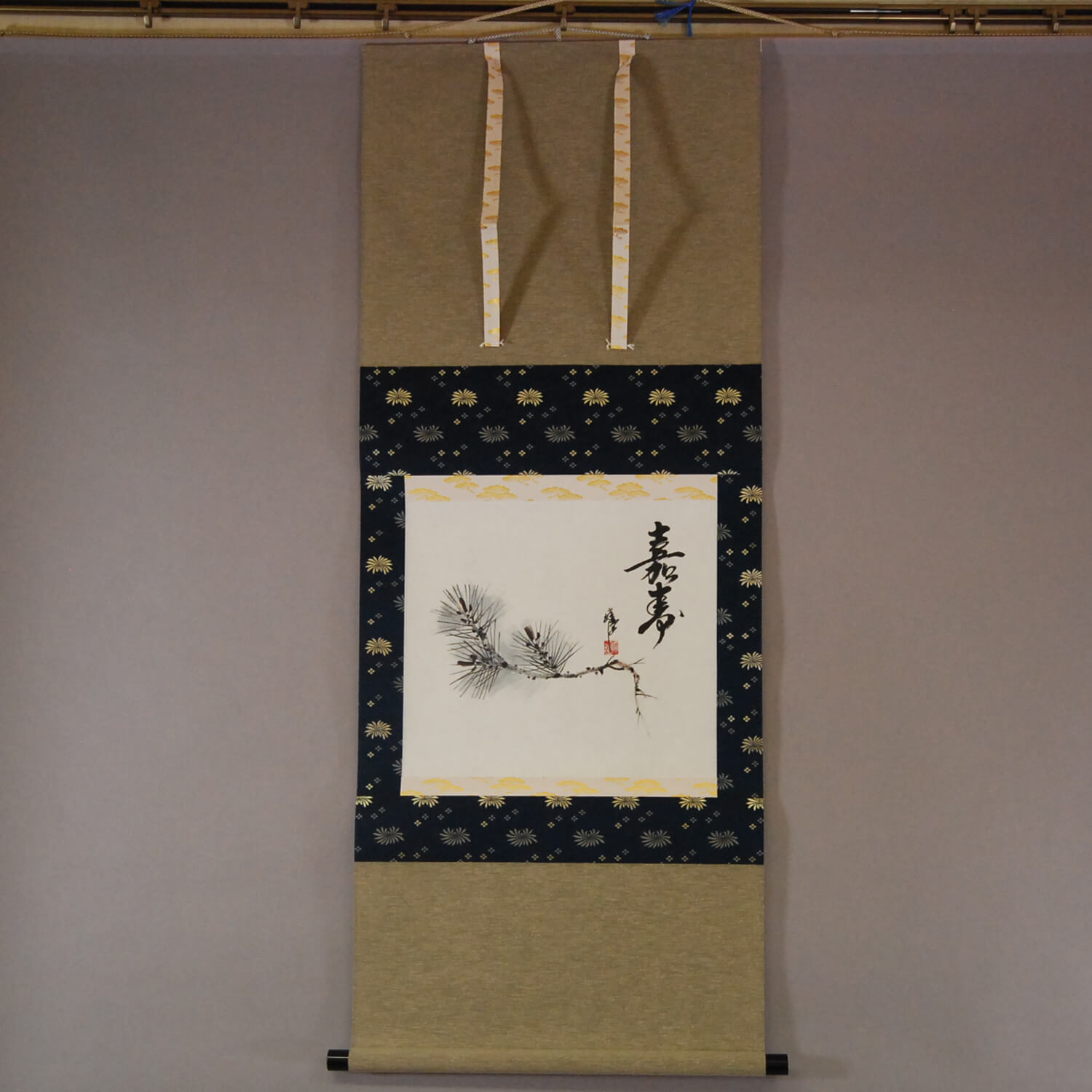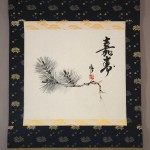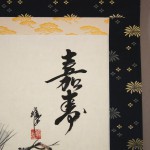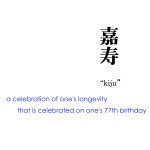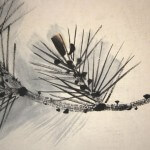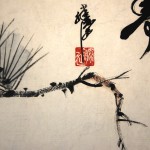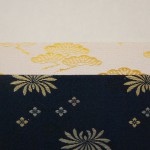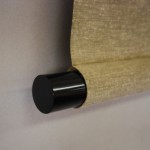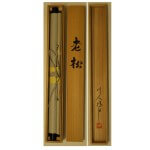Products Lineup
News / Blog
Other Menus
Kakejiku Hanging Scroll: Old Pine / Katsunobu Kawahito - Oimatsu
- Product ID
- 0127
- Name
- Katsunobu Kawahito
- Profile
1922-2019
A member of the Nitten Exhibition- Size
- 605mm x 1390mm
- Roller End Material
Wood coated with black "urushi" (lacquer)- Material of the Work
- Japanese paper
- Price
- JPY 150,000
- Stock Condition
- In stock
- Payment: Click the Paypal Mark
- Duty and Taxes
Import duty and taxes are beyond our control and may apply to your shipment. Please noted that these fees are the responsibility of the buyer.
- Description
The Japanese people are in the habit of celebrating their longevity on their birthdays: “Kanreki” (the celebration of a person’s 60th birthday), “Kiju” (77th birthday), “Sanju” (80th birthday), “Hanju” (81st birthday), “Beiju” (88th birthday), “Sotsuju” (90th birthday), “Hakuju” (99th birthday), “Hyakuju” (100th birthday), “Chaju” (108th birthday), “Dai Kanreki” (120th birthday) and “Tenju” (250th birthday.)
This work was painted by Katsunobu Kawahito for his Kiju. Pine needles are always green, so a pine tree is considered a symbol of longevity in Japan.
Although a pine is simply painted in this work, this depiction is more refined than elaborately painted. The mounting fabrics with patterns of pine trees are very interesting.

